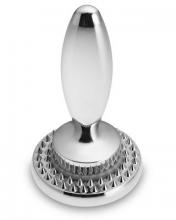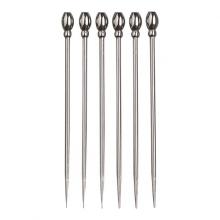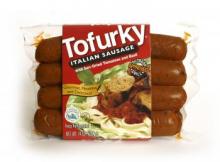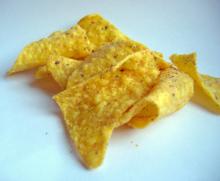The Best Kitchen Tools for Fighting Off the Undead
When the zombie apocalypse befalls us, hordes of desperate survivors will be raiding the gun stores. You, scrawny nerd that you are, won't stand a chance at landing a Glock. Let's face it--when the pandemic arrives, no one is going to be civil about it. It'll be a full-on survival of the fittest hardcore challenge, and you're not going to come out on top by sheer strength. You haven't lifted a weight since gym class in high school and your New Year's resolution to run more often lasted until you realized that it was cold out there in the great outdoors. You're slow and you're weak and you don't even have a car that you're sure can go above 90 anymore. What's a geek to do in the apocalyptic aftermath?
Luckily, you're brighter than some of the bulbs in the box. And you've been around a kitchen long enough to figure out how to cook food with tools beyond your standard aluminum saucepan. You're also crafty enough to realize that a lot of the objects most people will overlook as weapons for fighting the horde actually can be repurposed for some clever, clever violence. While the rest of your middle American town busts for the closest weapons depot, you're going to be high-tailing it the other way toward the Williams Sonoma. Because while you may be too nervous and clumsy to fire off a real, live magazine, you're one damn fine cook. And you're off to serve up some serious zombie pain.
Here's your arsenal. Use it well.
The meat tenderizer was actually invented as a torture device in the middle ages. It only made its transition to the kitchen when one dungeon guard realized they could do the same thing to their tough, dry rations that they were doing to their prisoners' faces--wallop them into tasty, tender oblivion. Now in the zombie-infested landscape, you'll get the chance to bring the tenderizer full circle back to its roots by turning undead skulls into delicious bloody pulp.
The classic blunt object. The original face-flattener. They don't make 'em quite like they used to, but this 12-inch Lodge classic provides a convenient handle so you can keep a good grip when you're swinging it around.
Designed to slice entire pizzas in half in one go, this Bialetti blade works similarly on zombies. It's actually very difficult to slice a human being perfectly in half--even the nasty, gooey, rotting kind--so you'll probably want to go for a little above the legs or right at the neck. The instructions for use apply equally to cutting a freshly-cooked pizza as they do to mowing down the undead: "Simply grasp the handle at opposite ends and rock the blade back and forth to create portions in the desired size."
It's like a big ol' spankin' paddle, only it has sharp holes in designed to take big things and turn them into smaller things. Usually the big things are vegetables and the smaller things are grated vegetables; in your case, the big things are brainless, hungry zombies and the smaller things are tiny shards of former human.
If you're not very good at darts, I suggest you begin your training now. You'll need top notch hand-eye coordination when you're facing down a rotting mob and your only hope of survival is a sharpened hors d'oeuvre pick to the cerebellum. Steady your hand and aim true, my friend.
Turn your enemies into biscuits and gravy. Wrap a hand around the handle of the biggest cutter you can find and treat it like a set of brass knuckles. Punch it into the nearest zombie to create neat, fluted, and hopefully deadly puncture wounds.
When metal isn't enough to finish off the monsters, you need to turn to fire. With this convenient battery-powered pocket-sized torch, you'll be able to up the ante in your dueling. A quick draw of the flame-bringer ought to get you out of the stickier situations in your brutal ongoing struggle for survival.









